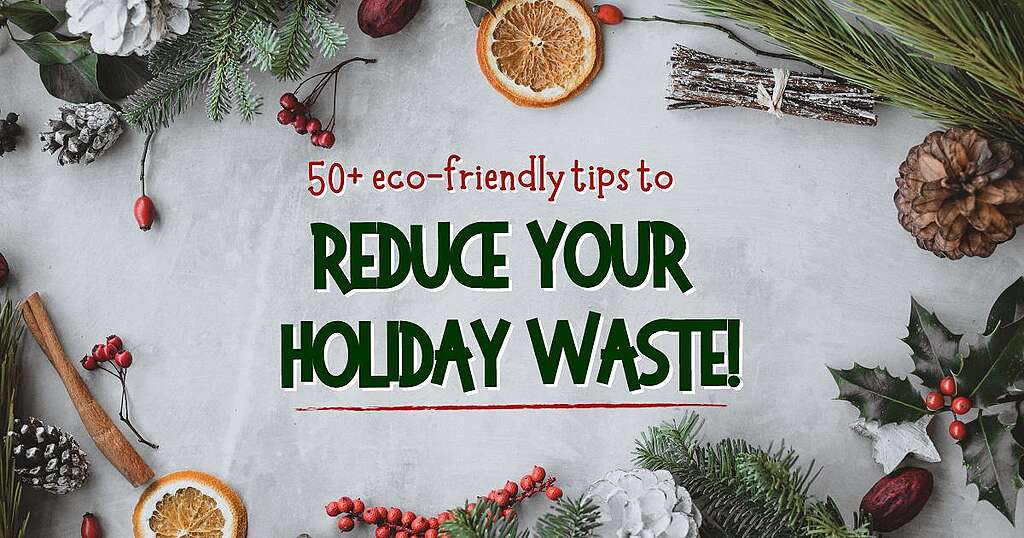
TABLE OF CONTENTS
Think outside the gift box – the eco-friendly gift guide
The great tree debate: Real vs fake Christmas tree?
Your guide to zero waste wrapping
Deck the halls with…low-waste decor
How to reduce Holiday food waste
‘Tis the season! The eggnog lattes are on the menus, the Holiday trees have sprouted up in grocery store parking lots and pretty soon, obligatory non-stop Christmas tunes will form the soundtrack of our lives for the next month (whether we like it or not). It’s beginning to feel a lot like the Holidays – and while for many it might be the most wonderful time of the year, for the planet, it has become a wasteful nightmare.
Canada’s waste production rises by more than 25% during the Holidays. Zero Waste Canada estimates that we’ll purchase and throw out an average of 6 million rolls of tape and 2.5 billion greeting cards. Altogether, 540,000 tonnes of wrapping paper and gift bags are thrown out each year, with Holiday waste representing a big chunk of that.
Simply put: the Holidays have become the most wasteful time of the year.
But it wasn’t always like this. Underneath the throw-away bows and oversized Amazon boxes, there’s a simpler, greener Holiday tradition to be had. So instead of a mounting pile of garbage and cheap things we don’t need, let’s celebrate the Holidays with our loved ones more intentionally.
Will you take the pledge for a low waste holiday this year? Explore the Low Waste Holiday guide below! Let’s get wasteless this holiday season! ?✨
Think Outside the Gift Box: the eco-friendly gift guide
With Black Friday being the unofficial kick-off of the Holiday shopping season, our inboxes and social media feeds are stuffed like a stocking with loud, shiny ads vying for our attention – and our wallets. Discounts and deals mixed with photos of beaming faces fuse the promise of a happy, peaceful Holiday with the consumption of yet more stuff. But does all this consumption really make the Holidays better?
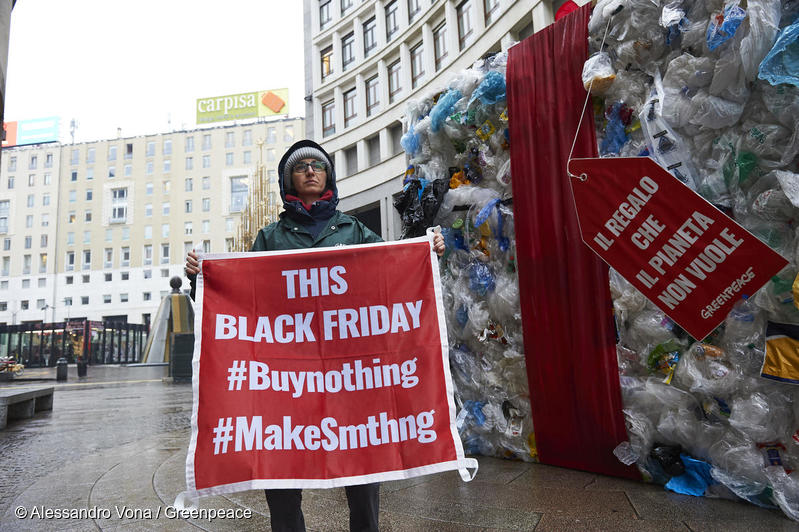
It’s not a stretch to say the Holidays have become the most wasteful time of the year – but haven’t they also become the most stressful? According to one UK-based study, up to 80% of the items purchased on Black Friday end up in landfills, burned in incinerators or end up in low quality recycling, often after a very short life. Meanwhile, research published in the journal of the American Heart Association found that coronary-related deaths shoot up in December and January, something researchers attribute partially to the stress and frenzy of the Holiday season. Sitting surrounded in a mess of torn packaging and empty Amazon boxes – we have to ask ourselves: is it worth it?
Before the giant corporations pull you down a rabbit hole chasing this or that perfect gift, we offer you an alternative path this Holiday season. What if we can celebrate the holidays, spread some gifts and cheer while axing the stress of shopping out of the picture?
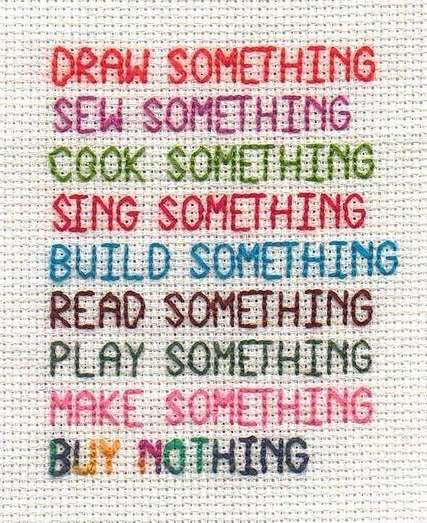
Whether you opt for zero gifts or an in-between approach, there are plenty of ways to mark the occasion without breaking the bank or hurting the planet. Here are a few gift ideas to help you continue to bring a little joy to your loved ones, while defending the values that inspire you and us!
1) Time spent together is priceless
Sometimes the best things in life…aren’t things. Before you think about gifting an object, think outside of the (material) box and consider the experiences that might appeal to your loved ones instead:
- Day trips
- Movies passes
- Concert tickets
- Gift certificate for their favourite restaurant or coffee shop
- Online or in-person classes
- Babysitting hours
- The promise to help with a project
- Cooking a meal together
- Wine-tasting
- Subscriptions to magazines, news sites or audiobook platforms

In short: brainstorm what your loved ones’ interests are and look for a unique experience to offer them. Your creativity is the limit, and there are ideas for every budget! The best part about gifting experiences? They can show your desire to spend quality time together.
2) Dare to make your own gift!
Do you have a talent for knitting, sewing, macramé, painting or any other craft? It’s time to put your skills to the test and make your own gifts! There’s nothing more meaningful than devoting time and effort to making and offering a one-of-a-kind homemade gift.
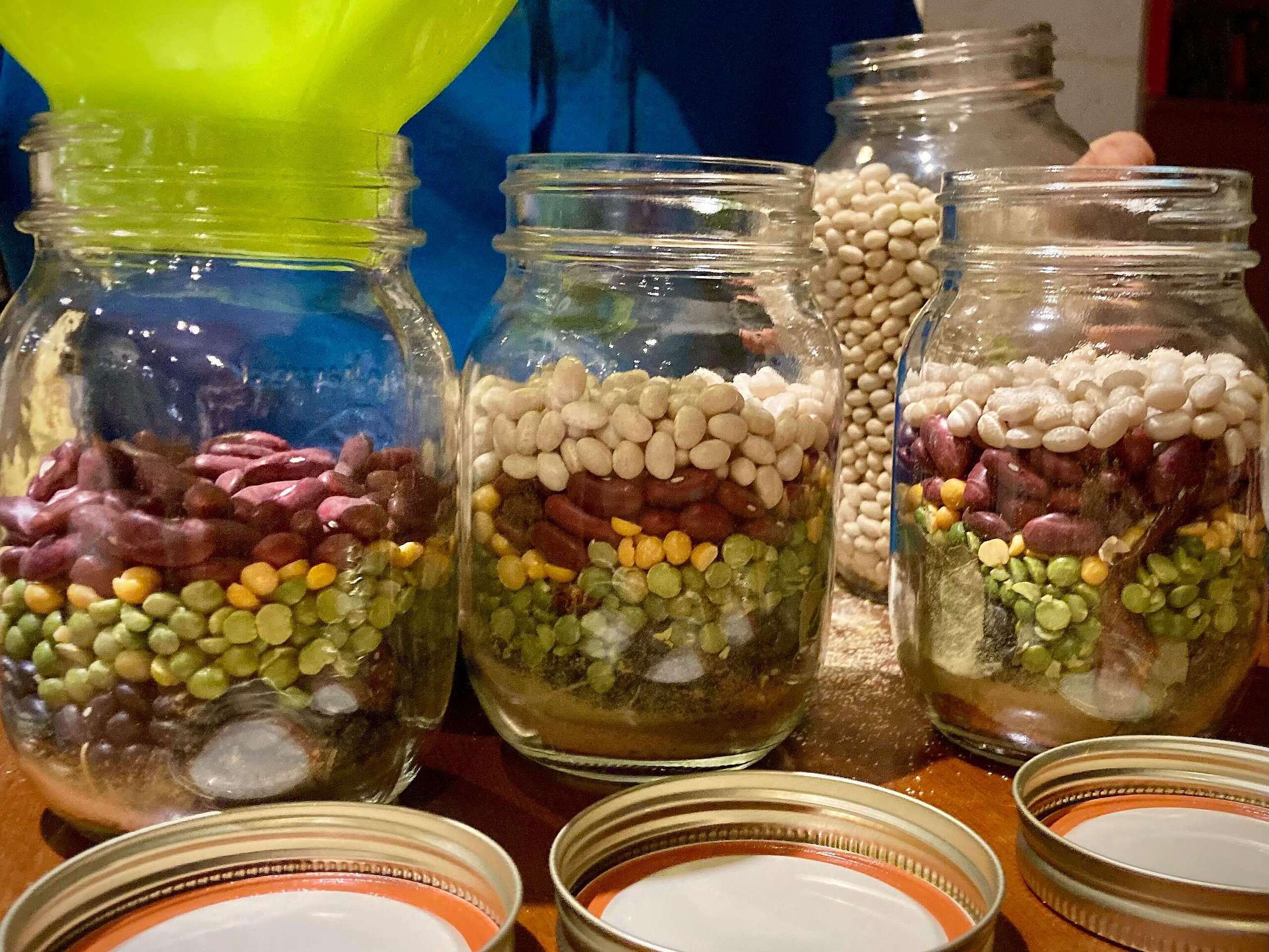
What you create doesn’t have to be complicated. The goal is to give something that comes from you and is made with intention. Some ideas to surprise your loved ones:
- Letters, drawings or collages
- Plant cuttings
- Canned goods and preserves
- Cake or soup ready-to-use mixes (check out these recipes.)
- A piece of furniture or woodwork
- Beverages with a wide range from lemonade to boozey options
- Pottery pieces
- Zero-waste care products like soaps, creams, shampoo or toothpastes
- Cookies or sweets
- Spice mixes or herbs bouquets
- >> Here’s a few more DIY ideas to get you thinking <<
3) Normalize second-hand gifts
Maybe your loved one has been pining over something specific and you want to bring them some Holiday cheer by fulfilling this wish. Giving physical gifts is not wrong, but there are ways to find things that are more sustainable and socially responsible. And that’s in the secondhand market.
As the stigma surrounding second-hand gift giving fades and demand increases, popular second-hand platforms are responding accordingly. Online platforms like Bunz Trading Zone and the Freecycle Network make it easy to search for specific items. Buy Nothing Groups provide a digital meeting place for neighbours helping neighbours get what they need without spending any money. Online marketplaces like Facebook Marketplace and Kijiji make the experience of finding items others have listed near you as smooth as (vegan) butter.
But it’s not limited to the Internet. Free stores and markets offer people physical spaces to swap items for free within their community (think little free libraries, but for all things!). If you want to stroll through the winter days ahead, discover your nearest flea market, thrift-shop or community store. Surprises guaranteed.
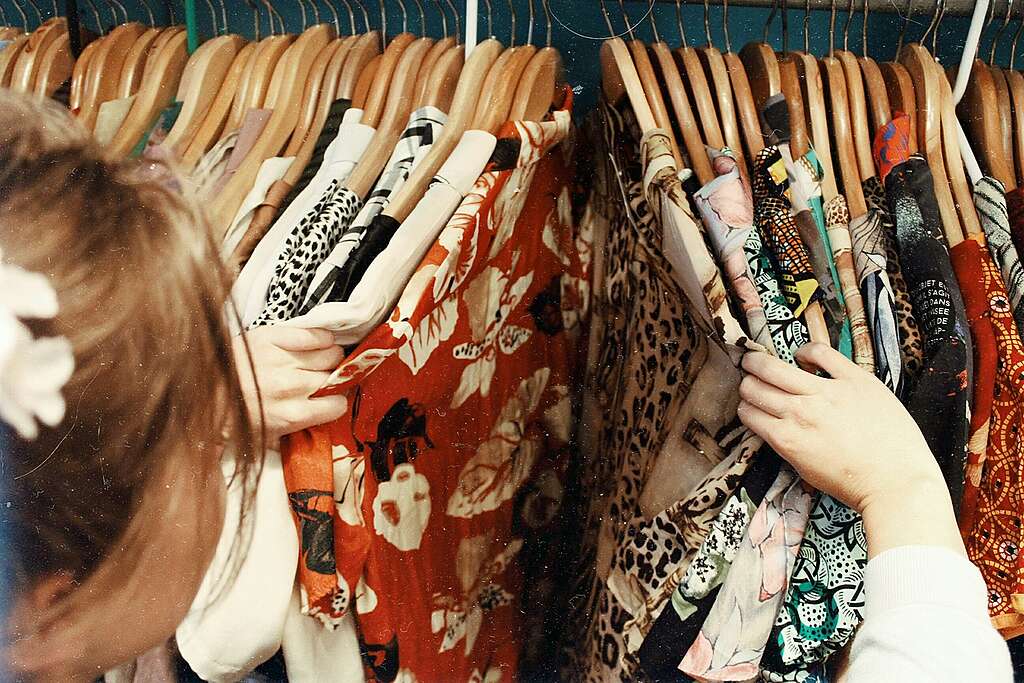
4) Don’t underestimate useful gifts
While advertisements try to sell us the magic gift every year, there’s an age-old recipe that works when you dare to try it: the useful gift!
Has your loved one been wanting to do some repairs or change a piece of furniture for a long time? Or needs help with a medical expense or childcare for a specific day? We know someone whose family and friends got together to pay off their student loans. Talk about a gift!
There are all kinds of useful gifts – not necessarily expensive – that make a lasting impression.
Without embarking on big projects, a useful gift can also be a way to share your local discoveries of the year. A handmade soap, hand-embroidered socks, a spice or your favourite book. Share what you love.
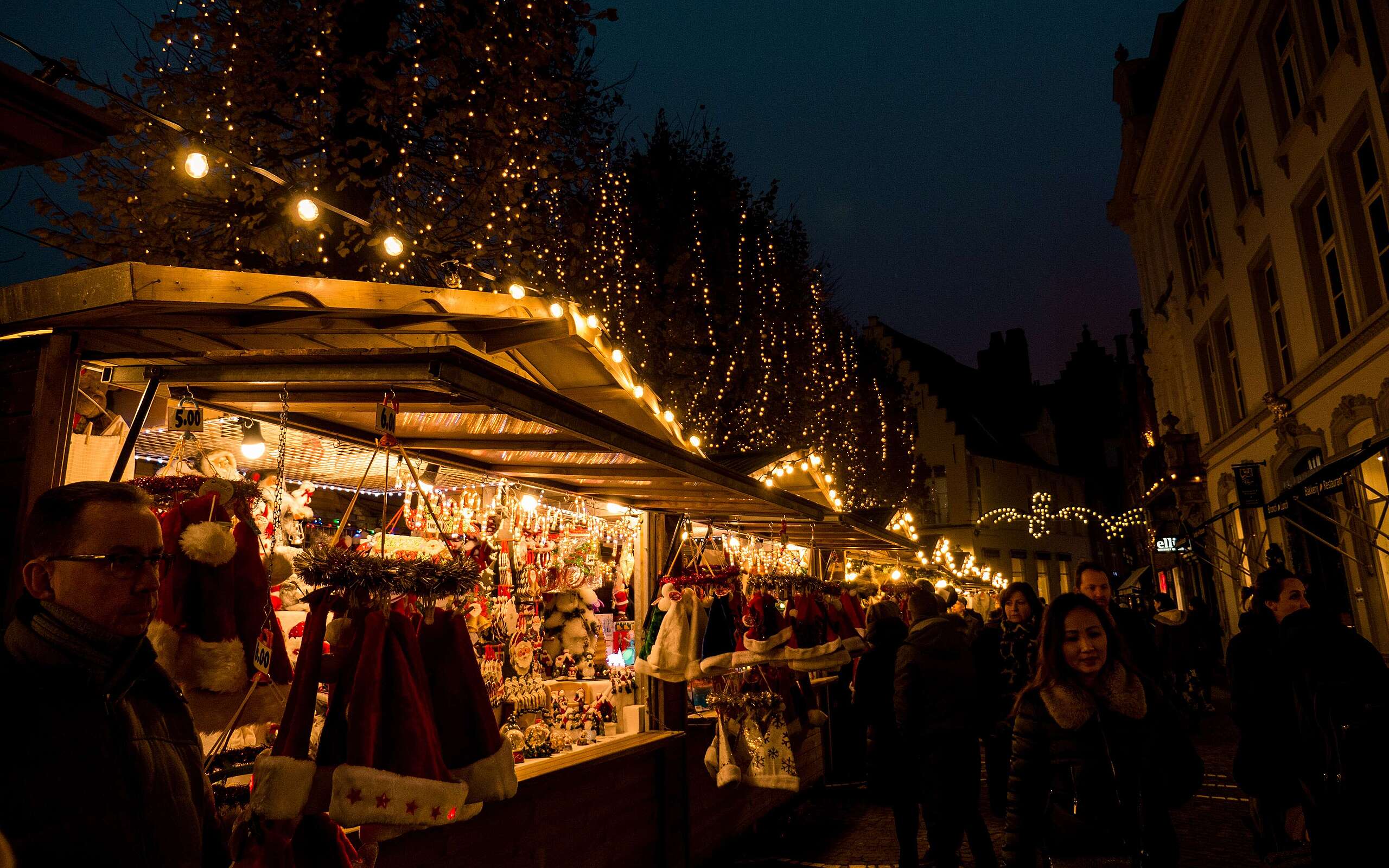
And it’s ‘that’ time of the year: a lot of craft fairs, artisan and community markets will be held across the country over the coming weeks. Some of these events are organized by organizations focused on supporting local artists and makers and promoting the well-being of our communities. By participating, you’ll also support their year-round mission. And shopping in-person not only supports your local community, it cuts back on shipping-related waste. A useful gift for everyone!
6) Make another great year possible
And if you’re already planning to be late on gift-hunting, don’t fall into the last-minute gift card trap! A good portion of them end up unused and they all generate a worrying volume of waste.
Instead, choose a cause that’s close to your heart and make a donation in honor of your loved ones. It’s a great way to help organizations of all sizes face the next year with greater peace of mind.

At Greenpeace too, this is a crucial time to prepare for the year ahead. Greenpeace is 100% independent and receives no funding from governments or corporations. It’s your donations that have enabled us to make a difference since 1971, and we don’t intend to stop there!
If any of these ideas inspire you to take action, take the low waste holiday pledge and stay tuned for our next holiday tips!
The Great Tree Debate: Real vs Fake Christmas tree?
Now that we have unpacked how to think outside the giftbox, we can move on to the great tree debate: which is more sustainable, a real tree or a fake tree? Before you rush out and buy a Holiday tree, read on to see what the research says and check out some of the creative eco-friendly alternatives listed below!
According to the research that has been conducted on the environmental impacts of real and fake Christmas trees, they may both have their drawbacks and their benefits.
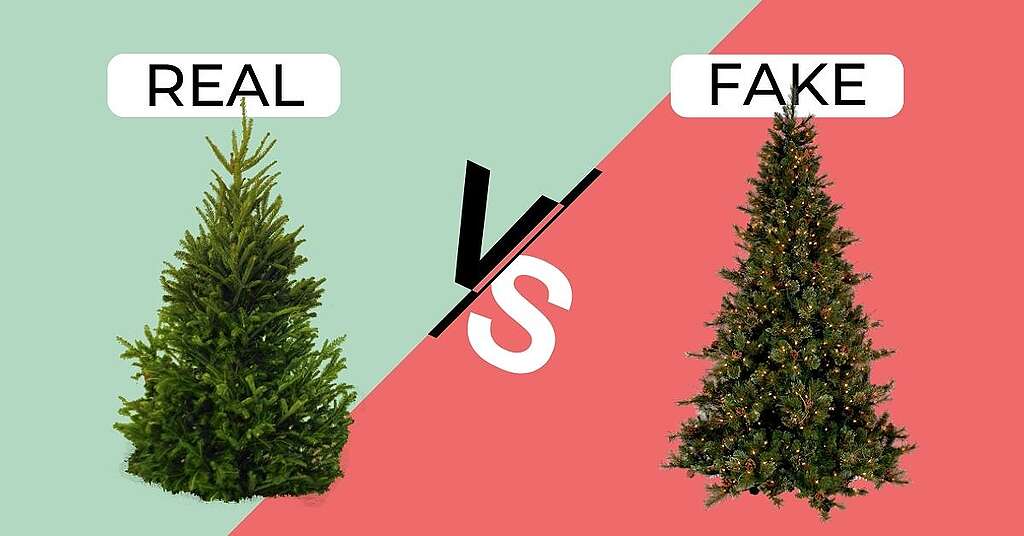
While we might think of real trees as more sustainable because they suck up carbon dioxide and are compostable at the end of their use, when you look at the big picture, things start to get more complicated.
Christmas tree farms can displace biodiverse natural ecosystems and, according to research conducted by Ellipsos, there is some debate around whether trees absorb more carbon than they release in their first 20 years of life (Holiday trees are generally cut down in their teenage years, so don’t reach their ultimate carbon absorbing old-growth potential). Many commercial Christmas tree operations are essentially an industrial monocrop with all the downsides associated with that type of farming, including the use of pesticides – some of which are even banned for use in gardening.
Fake trees, on the other hand, are often made from polyvinyl chloride (PVC), which is one of the naughtiest plastics on the plastics list and pollutes across its entire lifespan, from production to end of life. Artificial trees made from PVC, or most types of plastic for that matter, are unlikely accepted for recycling in most jurisdictions, and so end up going to landfill or being burned. The extraction of fossil fuels and the production of any type of plastic contributes to the climate crisis, and plastic trees are no exception. Because they are also usually made in factories overseas, GHG emissions associated with shipping increases their carbon footprint further, as does their disposal. And one last point to note, plastic trees shed over time, just like their real counterparts, so microplastic pollution in your home and beyond is also a concern.
For those wanting to escape the fake vs real dichotomy, here are some other creative options:
1) Make your own
Feeling crafty? Mix some creativity into the festivities this year and make your own tree out of upcycled materials (remember, the most sustainable item is the one that already exists. So the more reuse you can incorporate, the merrier for the planet!).
This DIY cardboard Christmas tree from Makedo gives you a variety of options for how to decorate the finished product – you could make a traditional Christmas tree design or have cutouts with different coloured lights inside for a modern look. Using cardboard from old boxes or past projects is the best option, and the second best ensuring your cardboard is made from 100% post consumer, recycled material.
Here are a few other ideas to get your creativity flowing:
- A more traditional cardboard Christmas tree design
- A tree made from a ladder
- A tree made from wooden blocks
- Minimalist? This tree reduced just to the lights might work for you, or this one from the Alblog featured below.
- A tree made from reclaimed branches
- Book lover? This Christmas tree made from books is for you!
- If you have a maker in your life and access to a Makerspace with a laser cutter, this one is a holiday challenge
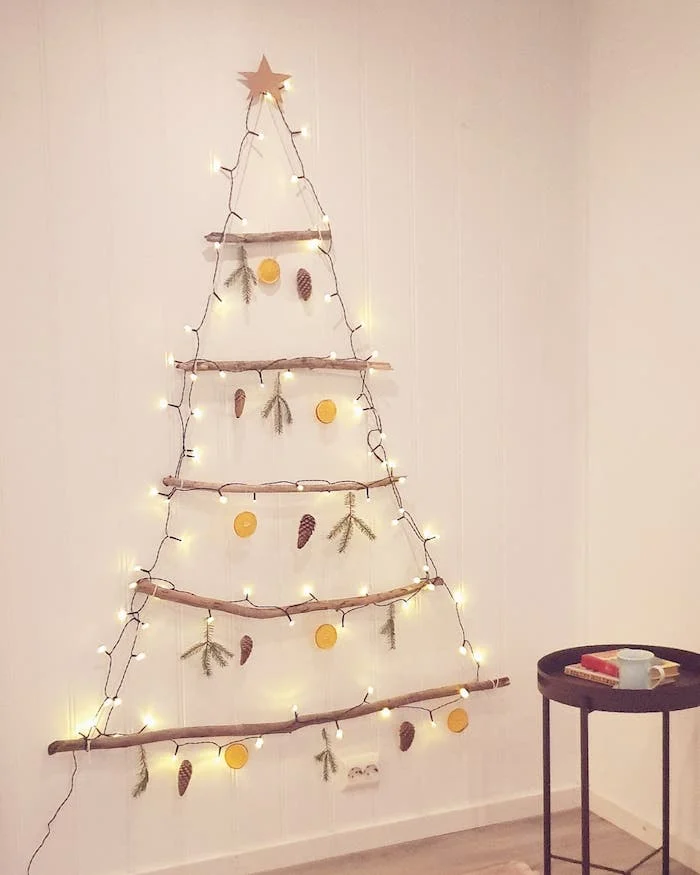
2) Get a live potted tree
Companies in Ontario, B.C and Alberta are making it possible for people to have a real tree, but minus the whole death thing: how about a living, oxygen-creating potted tree that you either plant or send back to the farm after the Holidays?!
In Toronto, Evergreen Brickworks Garden Market let’s you select a live potted tree to keep indoors over the holidays and then you plant it yourself in the spring. Here’s a handy guide on how to care for and plant your own tree.
FromTheGround Organic Gardens in Alberta gives you the choice: you can either get them to pick up the tree after the Holidays OR you can keep the tree and they’ll come back in the spring and plant it for you.
Know any other live-tree companies? Put them in the comments!
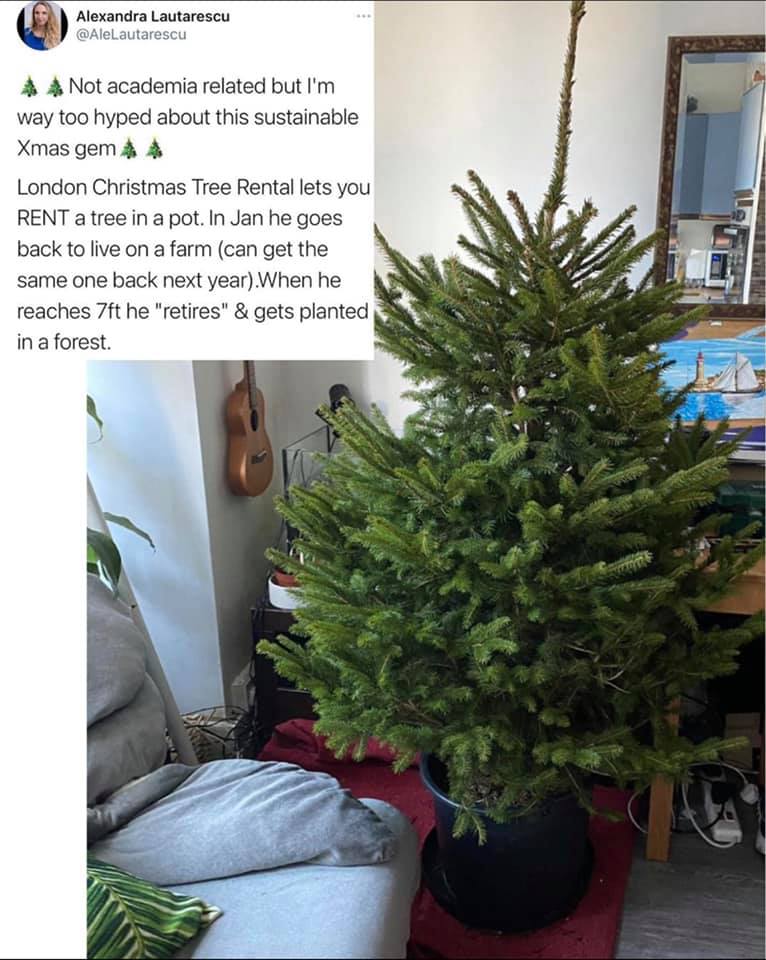
Also note that these options can be pricey – but if it is in your holiday budget, it’s money spent on supporting reuse-centred companies. Going forward, we need more government support for companies driving the reuse revolution in Canada, to ensure everyone has the option to participate and they are not priced out.
3) Get a second hand artificial tree
If you’re going to commit to an artificial tree, get it secondhand rather than purchasing it new.
The research conducted by Ellipsos and the American Christmas Tree Association – both using comparative life cycle approaches – found that real trees generate less greenhouse gas emissions per Holiday season than artificial ones, but that this changes the longer your artificial tree is around for because the emissions are divided over many years.
An artificial tree has to be in circulation for at least 8 years – but ideally 20 – to reduce its carbon footprint. So, if you can find a good quality one in the secondhand market and take good care of it with proper storage, it can continue its journey long after you’re finished with it. Here’s a guide for how to navigate the secondhand market during the Holidays.
4) Get a Norfolk Island pine
Are you a proud plant parent who enjoys taking care of your leafy friends? Maybe a good alternative for you is to invest in a Norfolk Island pine that you can keep indoors year-round and transform into a Holiday tree during the season.
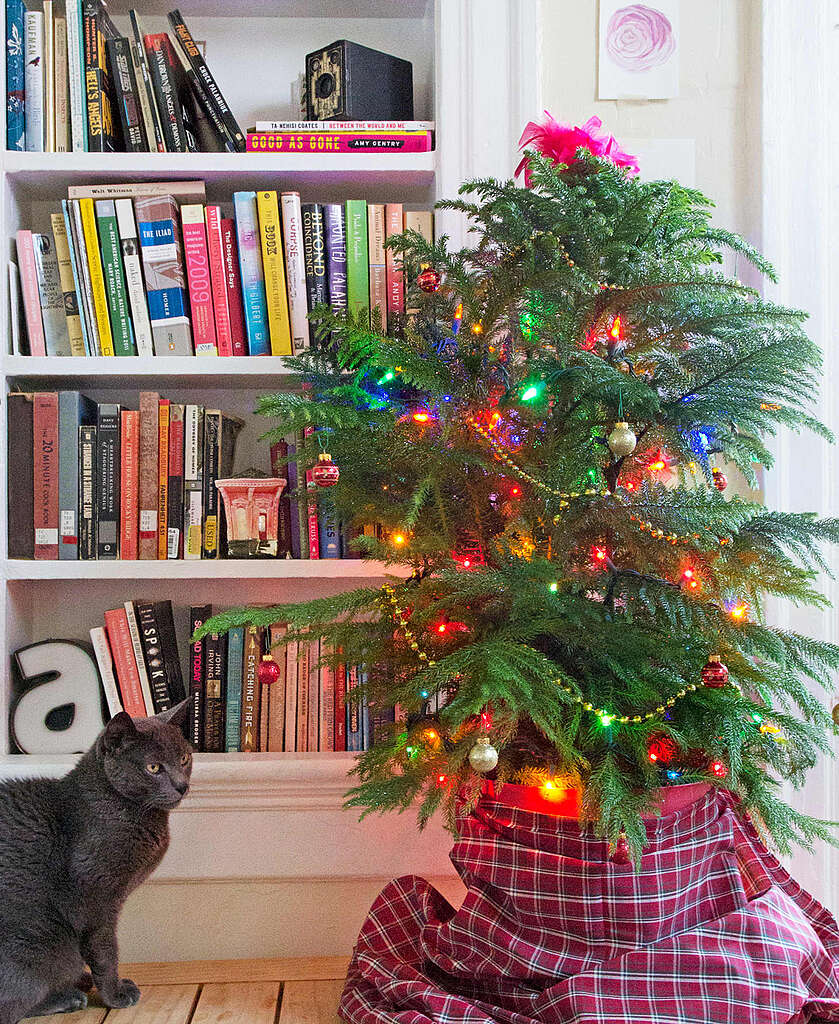
5) Decorate a living outside tree
If you have access to an outdoor tree, why not meet the tree where it’s at and decorate it for the Holidays? This way, you don’t have to pay for a pricey live potted tree or worry about any environmental impacts of a real vs artificial tree.
If you’re still craving to have something indoors, supplement your outdoor Christmas tree with an indoor DIY Christmas tree (see point number 1).
If you do end up getting a real, cut tree for the Holidays, try to ensure it comes from a local, sustainable tree farm that doesn’t use pesticides and where possible, make sure it gets responsibly composted.
If you end up going for a new artificial tree, try to select a high-quality one that is PVC-free, that is designed in a way that’s less likely to shed, and that will last a long time so it can be passed on responsibly when you’re finished.
Your Guide to Zero Waste Wrapping
According to a study conducted by Zero Waste Canada in 2017, Canadians generate 540,000 tonnes of waste from gift wrapping and shopping bags every year — that’s the equivalent of 100,000 elephants if you need a visual. Most gift wrapping is made out of hard-to-recycle mixed materials and so goes straight to landfill.
Over the Holidays, our waste volume goes up by at least 25%, according to the same study — hardly a surprise to anyone who has ventured out into the streets on the garbage day after christmas. The sidewalks become an obstacle course of overstuffed garbage bins and bags nearly exploding with old wrapping, ribbon and packaging.
If every Canadian wrapped just 3 gifts in upcycled and reusable materials rather than buying wrapping paper new, enough paper would be saved to cover 45,000 Hockey rinks. So for those looking to reduce their waste this Holiday season, gift wrapping is an easy and simple place to start. Here are 12 techniques to rethink how you wrap up your gifts the wasteless way this year.
1) Furoshiki Wrapping
A series of Japanese wrapping techniques for wrapping gifts in cloth, this is a go-to for gifts of all shapes and sizes.
But before you rush out and buy brand new cloth just to wrap gifts, remember that textile waste is a significant issue in and of itself – we send 81lbs of textiles to landfill per person each year in North America. It’s far more sustainable to use pieces of fabric you already have or check out local thrift stores to find second hand fabrics to use.
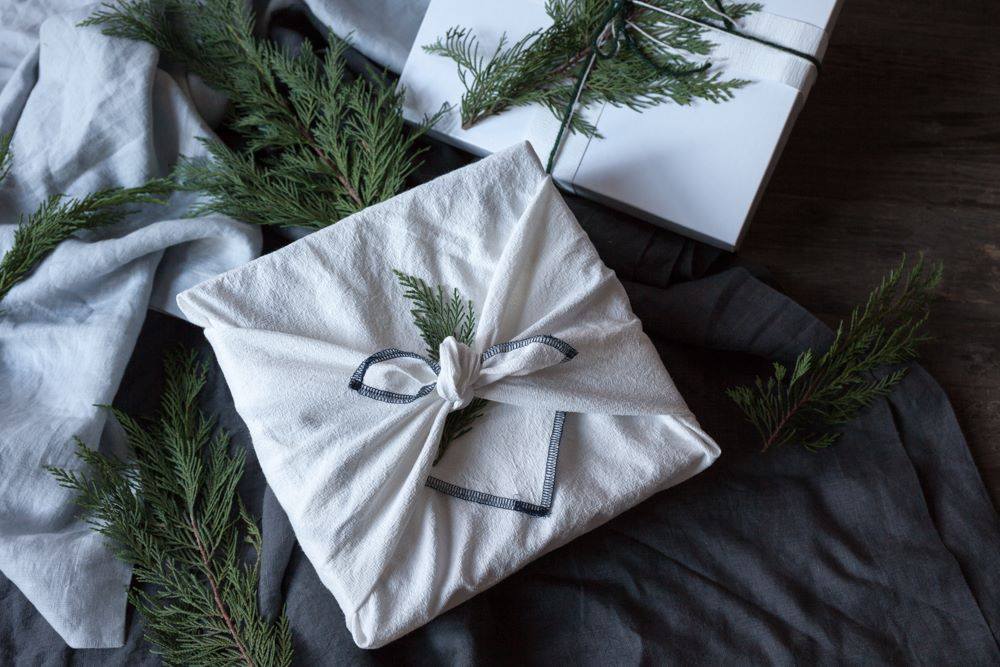
Check out this guide for an amazing list of the different Japanese Furoshiki folding techniques you can try.

2) Find alternatives to tape
We’ve all grown up with tape as a staple in the gift-wrapping experience. But what if I told you – you don’t need it to wrap gifts?
It’s just as simple – maybe simpler, actually – to fold up your gift the same as you would with tape, and then fasten it together using string, ribbon or other reusable tieable options. And again, bonus points for reusing materials you already have.
If you really feel you need to have tape, opt for paper washi tape.
3) Use natural greenery and foraged sprigs
Skip the plastic bows and ribbons and go foraging for leaves, pine cones, berries, fallen cedar or pine branches instead! These are truly biodegradable and can be returned to the Earth when the unwrapping is complete.
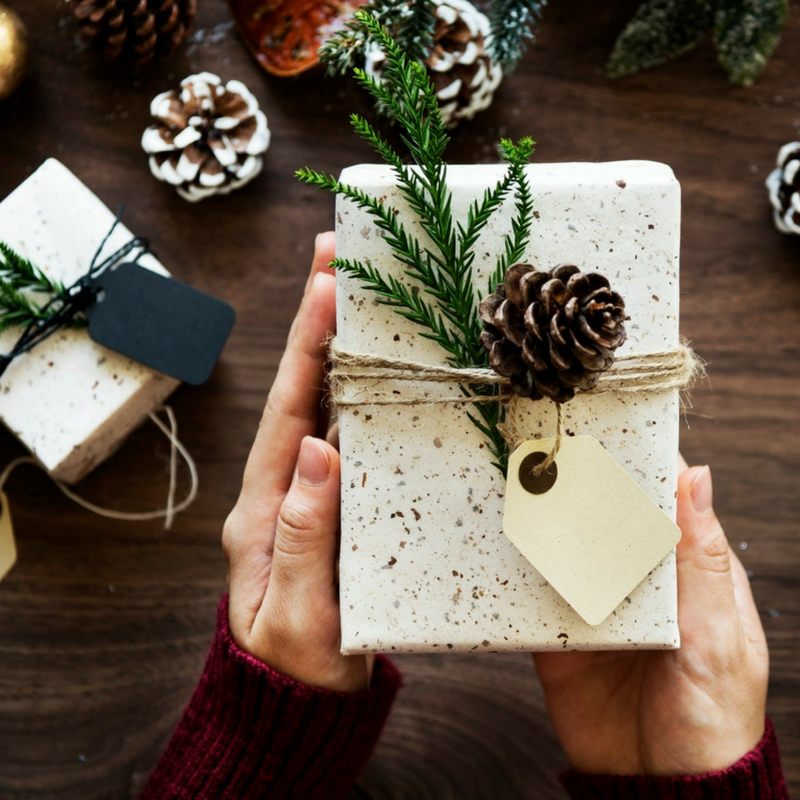
4) Use old maps
Do you have any old maps lying around? If you don’t have a use for them anymore or anyone to pass them on to, consider using them to wrap up your Holiday gifts.
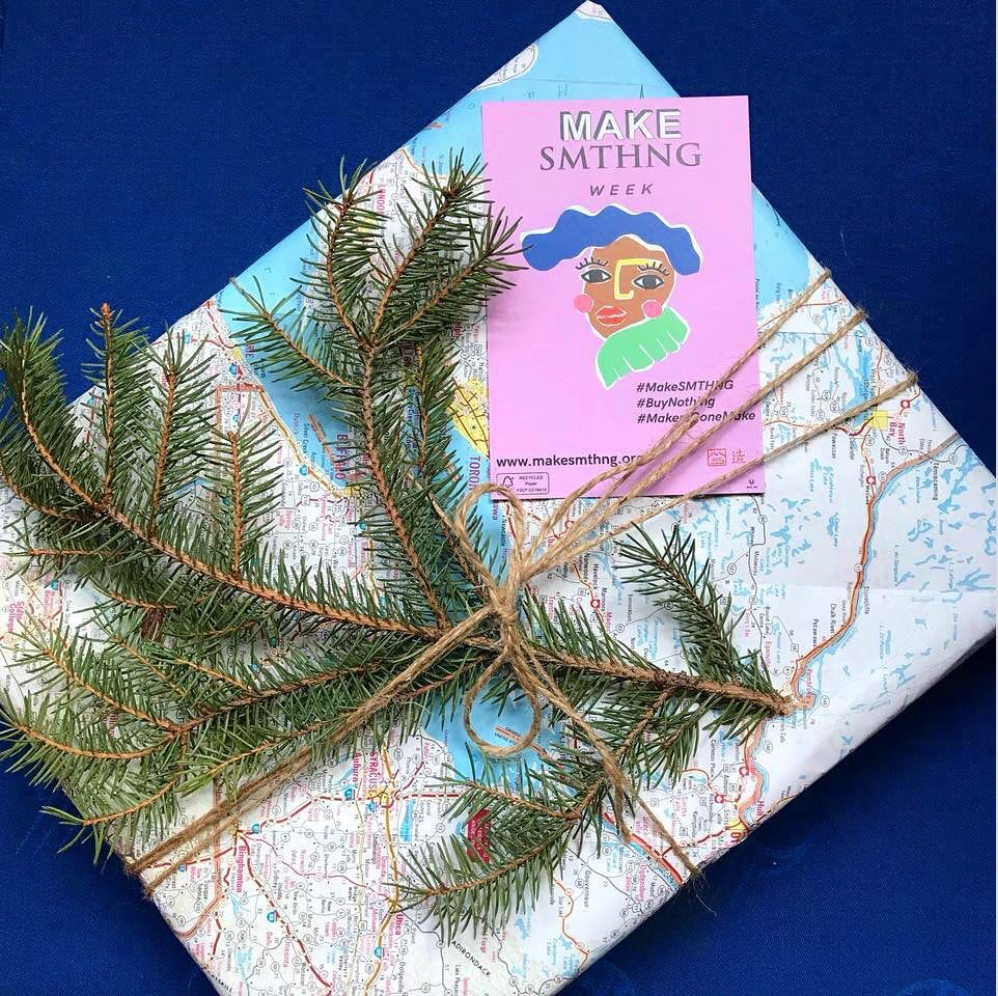
5) Reuse magazines or calendars
That old stack of magazines sitting at the back of your closet or on a shelf in your neighbour’s garage?
Last year’s landscape or arty calendar about to become dated? Their glossy finish and brightly coloured pictures will make for stylish and chic looking gifts.

6) DIY bows out of upcycled magazines
Not only can you wrap your gifts using old magazines, you can also make bows with them! You’ll find instructions on how to do this here, here, and here. If you need a video tutorial, you’ll find a good one here. You can also use maps.
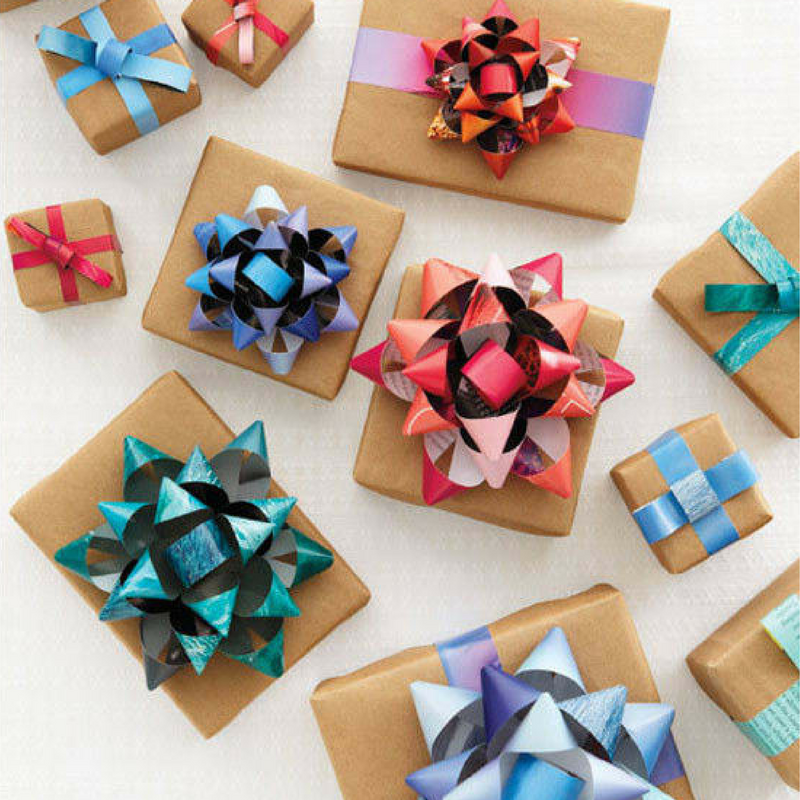
7) Use newspaper
Here’s an easy one: head to a coffee shop at the end of the day and grab the newspaper before it goes in the bin. Today’s news becomes tomorrow’s perfectly cute and trendy gift wrapping. And here’s how to make the newspaper roses.

8) Use a shirt
Check out your local thrift store for a cute shirt or find one you’ve already got but aren’t wearing anymore. You’ll find an online tutorial for how to use shirts as wrapping online here.
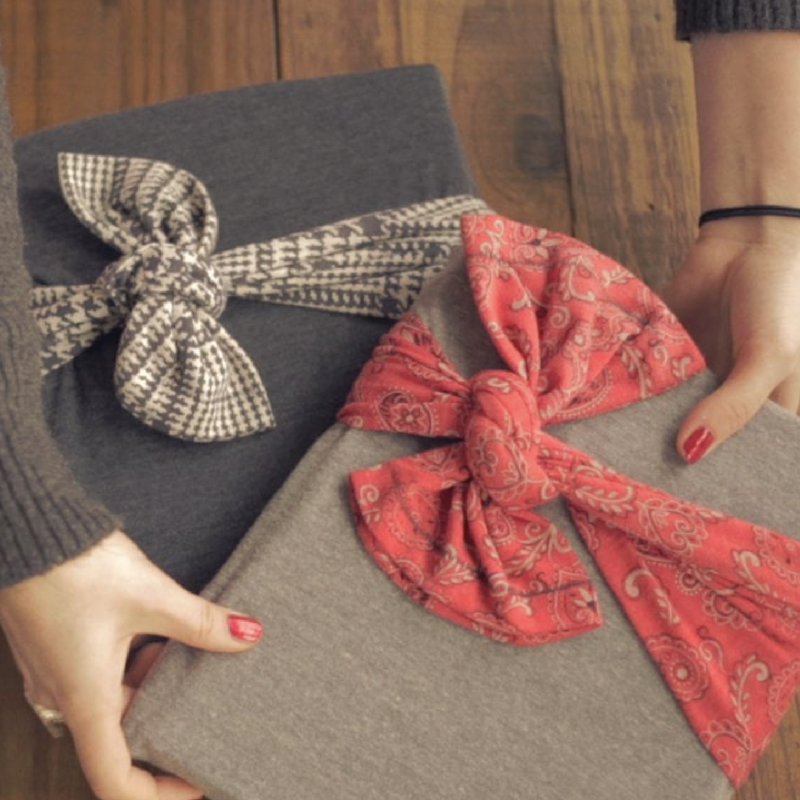
9) DIY gift bags out of cardboard boxes
Put any cereal boxes in your recycling bin lately? Go get them out and make these cute DIY gift bags.
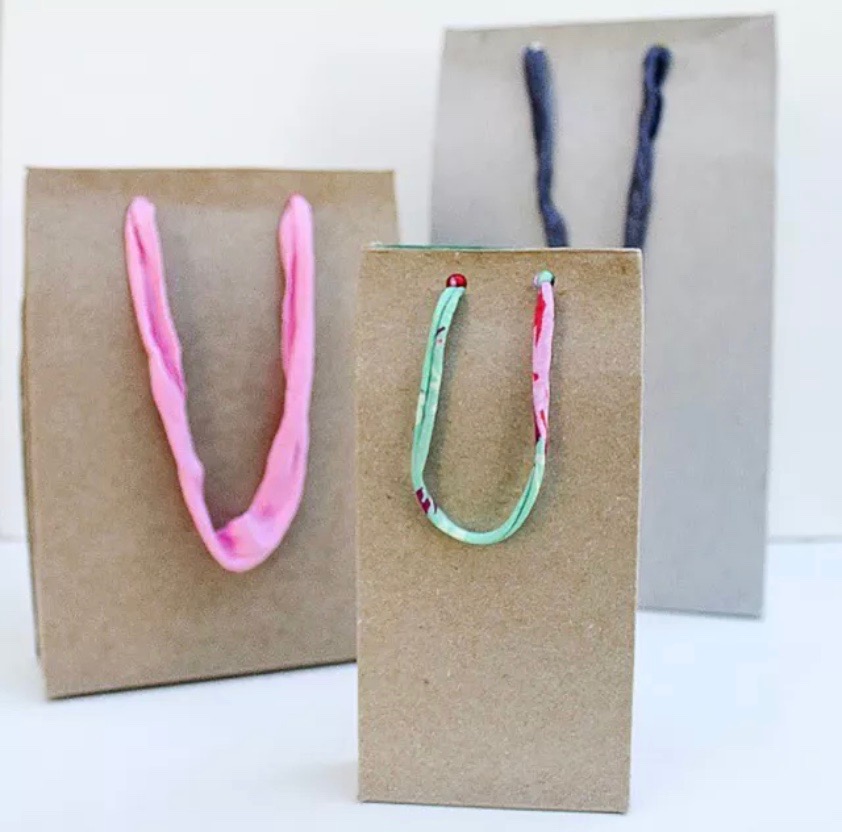
10) Make your own Holiday cards and tags
Reuse old cards you’ve received with gifts and upcycle them into holiday cards and gift tags.
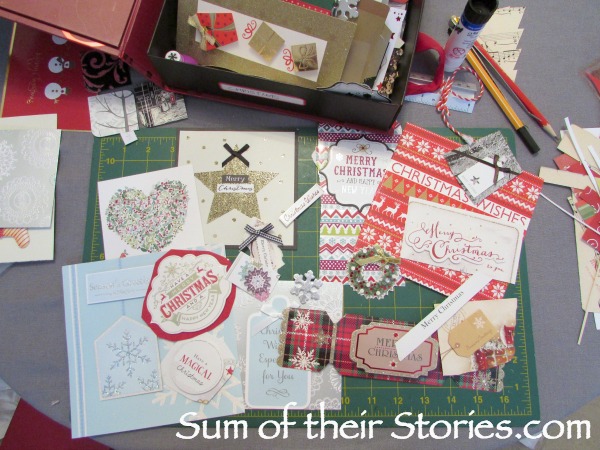
11) Kids artwork
Kids bring home a ton of artwork from school. You can’t keep all of it, but it probably feels bad to throw it away. With their permission, get them to select some of their drawings or paintings and use those to wrap some gifts.
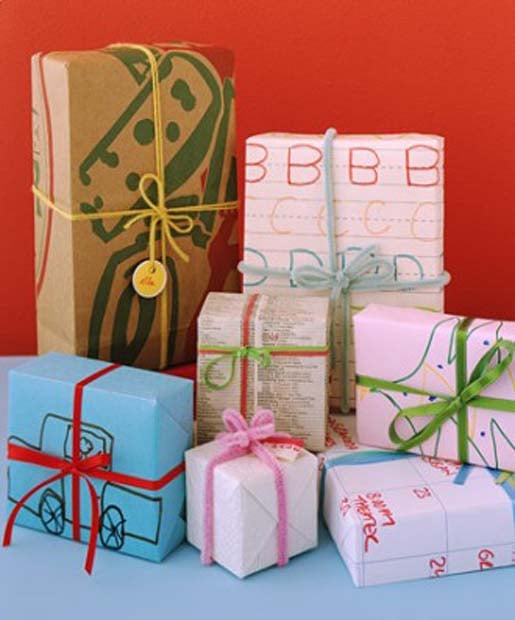
12) Use whatever you have lying around
Keep a little basket tucked away on a shelf or a drawer where you can store cards, packaging paper or string on gifts and parcels, etc. Pull this out when you have to wrap a gift. This saves money and time – you don’t have to shop for gift wrapping paper and everything you need is always in one place.
Deck the Halls with…Low-waste Decor
Decorating your home for the Holidays can create that warm festive vibe we’ve all come to associate with this time of year. If you’re in need of new decorations, some of the following tips can help save money while creating a planet-approved festive atmosphere.
The DIY possibilities for Holiday decor are endless – these are just a few ideas to spark your creativity and get you inspired. Do you have a fave DIY decoration that’s not listed here? Link it in the comment section below!
Make your own garland out of natural or upcycled/repurposed materials
- Dried orange slice garland: if you want your Holidays to look and smell amazing, these add the perfect touch. They are easy to make and once dried, if you store them in an airtight container, they can be used year after year. Here’s a quick tutorial on how to make them.
- Dried orange peel garland: save your orange peels and use cookie cutters to cut out cool shapes. Dry them in between the pages of a magazine, weighted down with books, and then string them together. Here’s a tutorial on how to do it.
- Salt star dough garland: these are simple to make – you probably have everything you need already in your kitchen – and they are a fun Holiday craft for kids and adults alike. Follow this tutorial for how to make them yourself.
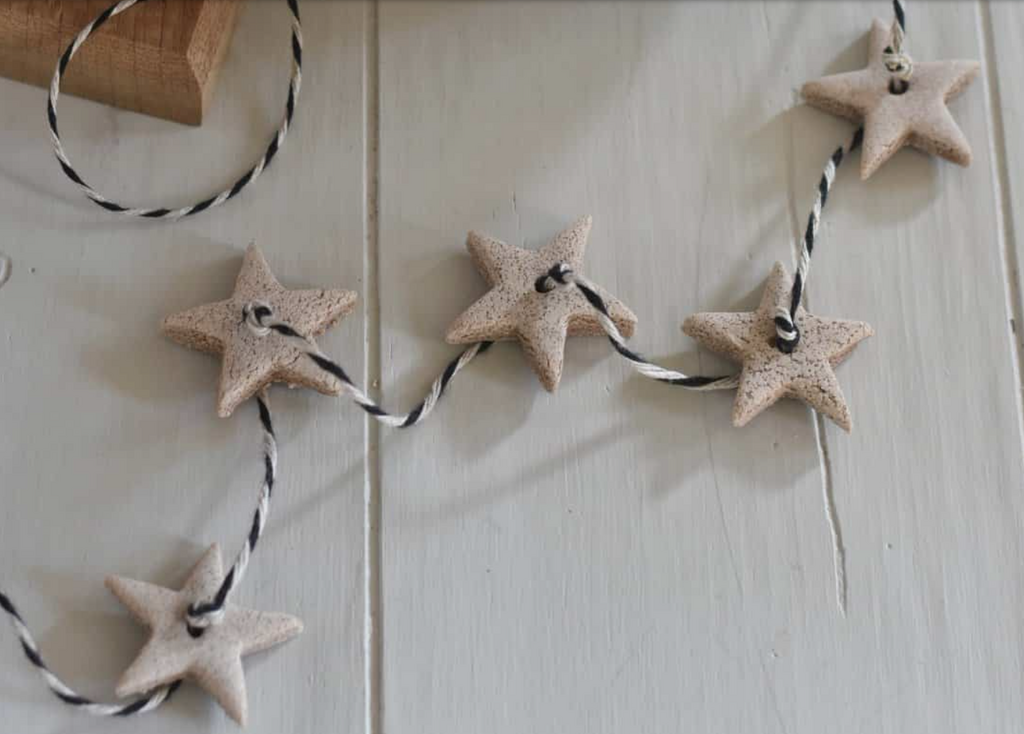
- GMO-free Popcorn and cranberry garland: an eco-friendly alternative to tinsel, these are perfect for decorating your eco-friendly Christmas tree. Here’s a simple, plastic-free tutorial on how to put them together.
- Origami star garland: all you need is any type of paper, including old magazines, calendars or even junk mail, string and craft scissors. Get folding and you’ll be seeing stars in no time.
- Rosemary mini-wreath garland: another super simple design that’s easy to put together and will have your home smelling like the Holidays. Here’s how to do it.
Make your own wreath out of natural or upcycled materials
- Upcycled textile wreath: if you feel like getting a little crafty, save some textiles from going to waste by creating a wreath out of them that can be used year after year. Try this one which upcycles a hanger wire as the base, or this one which uses a traditional metal wreath frame.
- Traditional wreath: go foraging for pinecones, berries and tree foliage and maybe incorporate a few dried oranges leftover from making your dried orange garland – and you’ve got all the ingredients for a traditional holiday wreath.
- Grapevine wreath: if you live somewhere where you can collect grapevines, they can be woven into a base which you can then fasten dried fruits and foliage to. Here’s a beautiful tutorial.

Twig wreath: like a grapevine wreath, but with tree trimmings. Another simple, pretty and nature-inspired Holiday wreath. Here’s how to do it.
DIY table dressings
- Bottle candle holders: if you’ve got some empty bottles plus some green foliage, voila, perfect plastic-free candle-holders for your Holiday table. This is really simple, but if you need a tutorial, here it is!
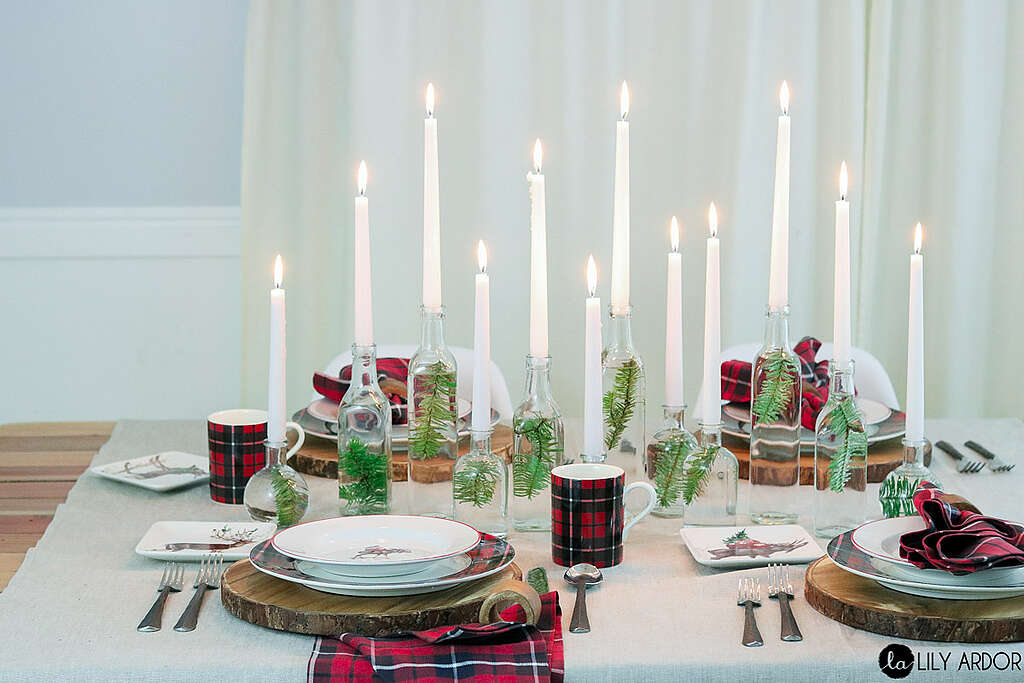
- Christmas crackers: rather than the mass produced store bought Christmas crackers that are filled with plastics trinkets generally no one really wants, why not make your own and fill them with useful items or consumables? Here’s a tutorial.
- Napkins: pick up a set of reusable napkins – bonus points if you can find them secondhand – and dress them up with some greenery.
- Foliage wreath placeholders: make a mini version of the grapevine or twig wreaths mentioned above, and then create mini wreath placeholders for your guests.
DIY decorations for the tree and home
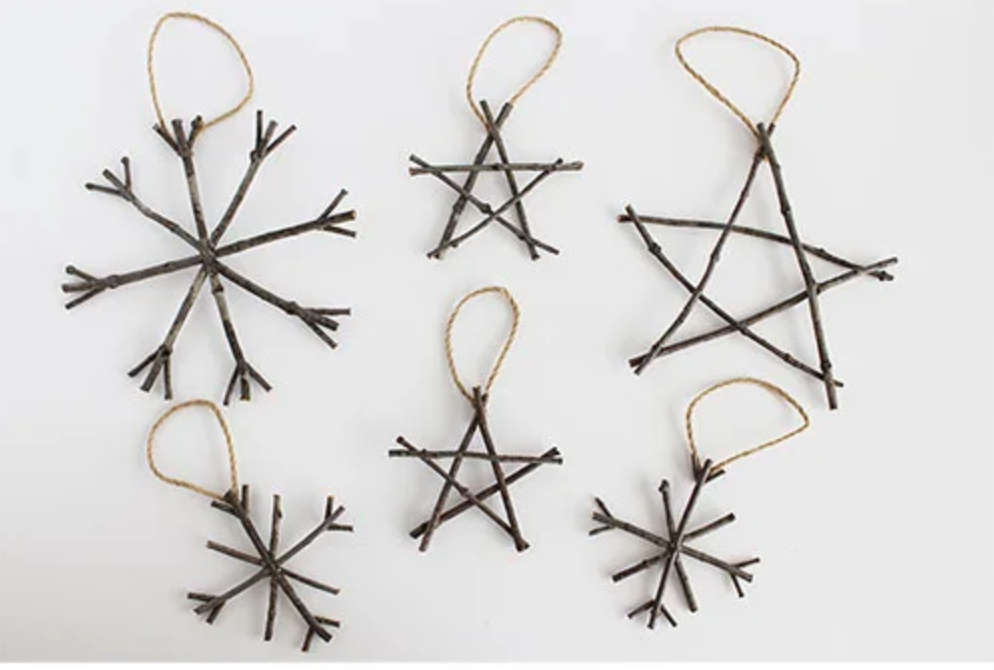
- Cardboard star decorations: Upcycle any cardboard you have laying around into these easy and decorative star ornaments.
- 3D star ornaments: take your DIY decoration game to the next dimension with these 3D star designs – could be hung on the tree or with garland above a doorway.
- Paper bag snowflakes/stars: if you have some old paper bags laying around, now is the perfect moment to repurpose them into paper bag snowflakes or stars.
- Toilet paper roll stars/snowflakes: start saving your toilet or paper towel rolls and turn them into paper stars/snowflakes. Here’s a simple version and a more complex version.

- Bead star ornaments: if you have some beads laying around, string them up into a bead star ornament for your tree (or to give as gifts!).
- Clothespin angels: a perfect touch to your tree, or decorating a gift for someone else. These clothespin angel decorations are the sweetest things.
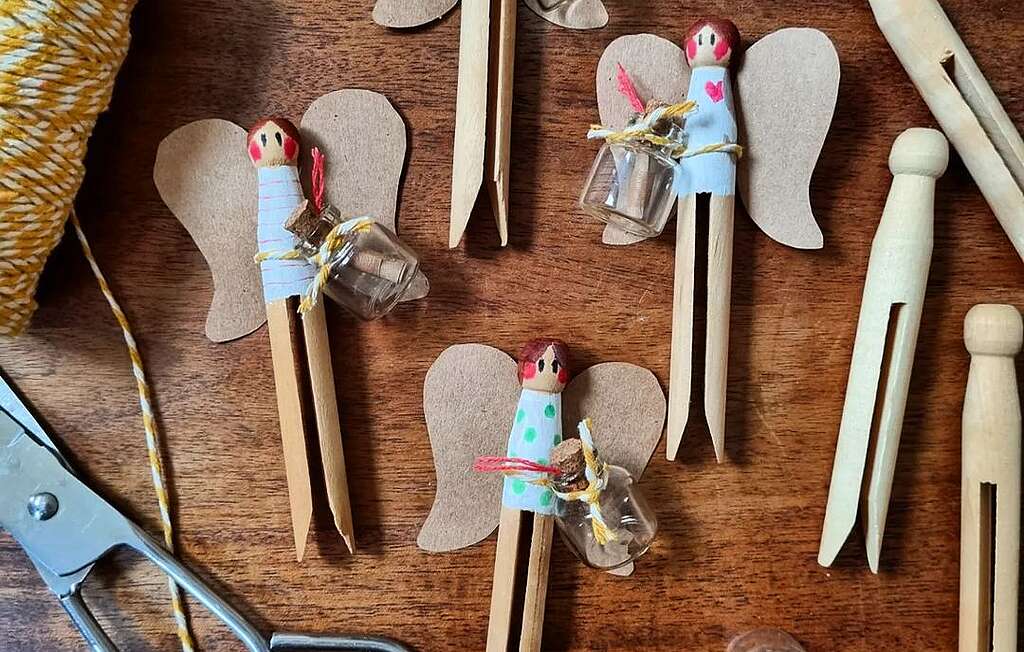
- Origami Christmas trees: try some origami paper Christmas trees, which can either be hung on the tree as a decoration or become a floor stand by attaching them to a stick.
Advent Calendars
It is a favourite Holiday tradition for so many, with childhood memories of excited anticipation for what comes at the end of the last door in the advent calendar firmly attached. According to research done by waste company Business Waste, 16.5 million advent calendars containing single-use plastics are consumed every year in the UK alone. Because they are mixed materials, they are a nightmare to recycle (not that that’s a solution to the waste crisis anyway), and will therefore most likely end up either burned or dumped in landfill.
Why not make your own DIY calendar out of repurposed materials, which you can then fill with your own goodies from a farmers market or bulk store, plastic-free?
- Toilet paper roll advent calendar: made out of recycled, thrifted and natural materials. Here’s a beautiful example, and tutorial here and here.
- Or make a toilet paper roll cardboard wreath advent calendar using this easy tutorial.
- Altoids tin advent calendar: a great way to reuse the perfectly good little tins that Altoids mints come in. And if you don’t want to use a magnetic board like this tutorial suggests here, you can simply stick them right on the fridge.
- Upcycled paper advent calendar: create little bags with paper you already have at home. This tutorial recommends sewing the bags shut, but you don’t necessarily have to. And here’s a slight variation.
- Shoe organizer advent calendar: repurpose a shoe organizer and turn it into this.
How to Reduce Holiday Food Waste
Reducing food waste is not only a gift to the planet, it’s also easier on your wallet. This year, feed two birds with one scone by using these tips to reduce holiday food waste … and save money!
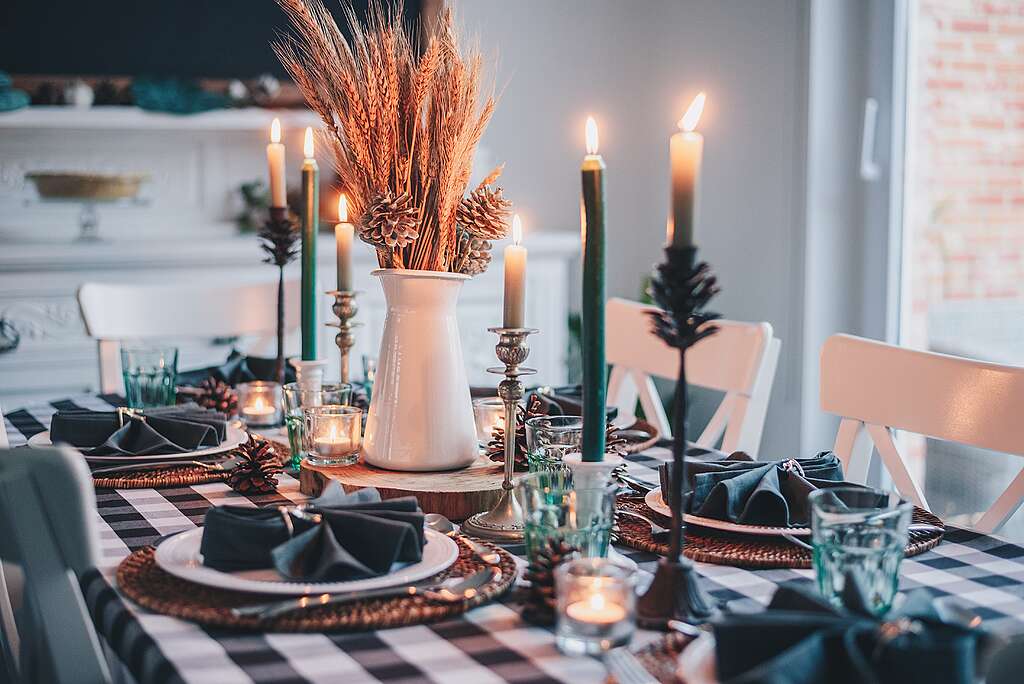
For many people, the holiday season is a cherished time to gather with loved ones, raise a glass, and feast. It’s also shockingly wasteful. The average Canadian family throws out 25% to 45% more garbage over the holidays, and food waste is a big piece of that pie.
Unfortunately, Canada already has a food waste problem year-round. A 2019 report from Second Harvest found that nearly 60% of food produced in Canada was tossed every year, with Canadian households spending an average of $1,766 per year on groceries they don’t eat. Oh my gouda!
Why is wasting food bad for the planet?
Food production and processing, packaging, shipping, storing, and cooking all release greenhouse gas emissions. When you throw out those wilted veggies in the back of your fridge, you’re wasting the emissions that got them there.
And if your food ends up in a landfill, that adds to the pollution. As organic waste decomposes in landfills anaerobically (without oxygen), it releases methane, a potent greenhouse gas with more than 80 times the warming power of carbon dioxide. In Canada, the organic waste in municipal solid waste landfills is responsible for about 23% of Canada’s methane emissions.
If global food waste and loss were a country, they would be the third largest greenhouse gas emitter in the world! What the fudge?!
Can cutting your household food waste really make a difference?
Not all food waste comes from individual households. Farms, manufacturers, distributors, supermarkets, and restaurants all contribute, but governments and corporations have the most responsibility on their plates.
Our broken industrialized food system means food is massively overproduced before a third is thrown away. Meanwhile, an estimated 735 million people go hungry. Food insecurity results from inequality, not lack of production. Large agribusiness and food and beverage companies keep food commodity prices low, making loss and waste a side effect. Entire crops may go to waste if they are not cost-effective to harvest and transport.
Second Harvest estimates that households contribute 14% to total food waste in Canada but, given the staggering scale of the problem, that’s not insignificant. So, if you’re feeling saucy this holiday season, why not reduce your waste with the following tips?
Plan
- Make a meal plan: Planning sets you on track to buy only what you need and no more. Calculate how much food you’ll need to feed each guest. And decide how you could incorporate any leftover ingredients from one recipe into another before they go bad. (We’re looking at you, parsley!)
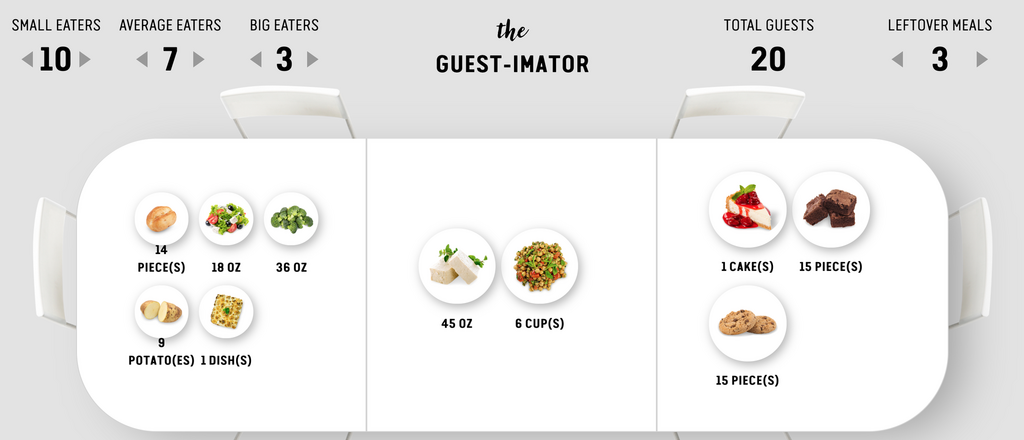
- Explore plant-based recipes: Plant-based foods require less land and water to produce and are responsible for fewer greenhouse gas emissions than meat and dairy. Browse our Eco Menu for climate-friendly food choices.
- Check your cupboards and fridge: Choose holiday recipes based on what you already own. Taking stock also stops you from accidentally buying something you have.
- Organize the fridge: Holiday groceries can crowd out items in your fridge and freezer. Clear space in advance of the big shop — by eating what’s there — so that you don’t forget about older food once it’s pushed to the back of the fridge or you have to throw it away.
Shop, share, beware
- Shop at local farmers’ markets: Buy food directly from local farmers, cutting out the extra steps along the supply chain where food can be wasted. Find a winter market near you at the Canada farmers’ market finder.
- Buy older food and save money: Grocery stores throw away huge amounts of expired food. Save some of this food from the landfills by finding sale items nearing their expiry dates with apps like Flashfood, available across Canada, TooGoodToGo, which is taking root in big cities, and Foodhero, available in Montreal.
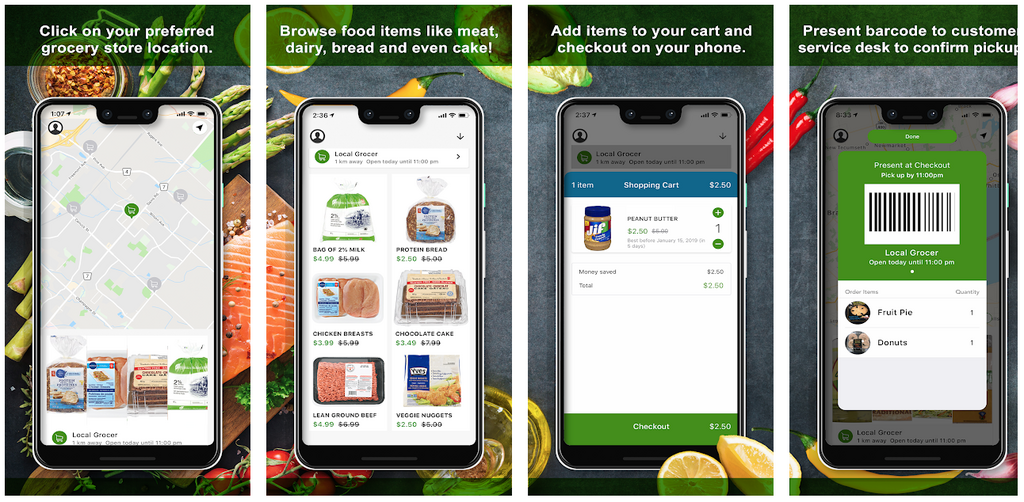
- Share: When we can’t buy the exact amount of an ingredient we need, we often get more (cough, parsley, cough). Try sharing and swapping extra ingredients with neighbours and friends, or offer your surplus using online networks, for example, local community Facebook groups or apps like Nextdoor, Freecycle, and Buy Nothing.
- Beware of bulk: In wealthier countries like Canada, marketing by big food companies pushes people to over-purchase bulk food items, which can become food waste at home. If you buy bulk, have a plan for how you will store it and use it all.
Eat smart
- Stop the “plate waste”: With so many tasty holiday foods, people’s eyes can be bigger than their appetites. Reduce serving sizes and make it easy for people to go back for seconds if they’re still hungry. You can pack up leftovers from serving dishes to eat later, but you’re less likely to reuse food from somebody else’s plate.
Enjoy the after party
- Don’t leave the leftovers: Have containers ready to send guests home with leftovers or ask guests to bring their own containers. Freeze the leftovers you keep, remembering to date and eat them, or transform tired leftovers into enticing new meals.
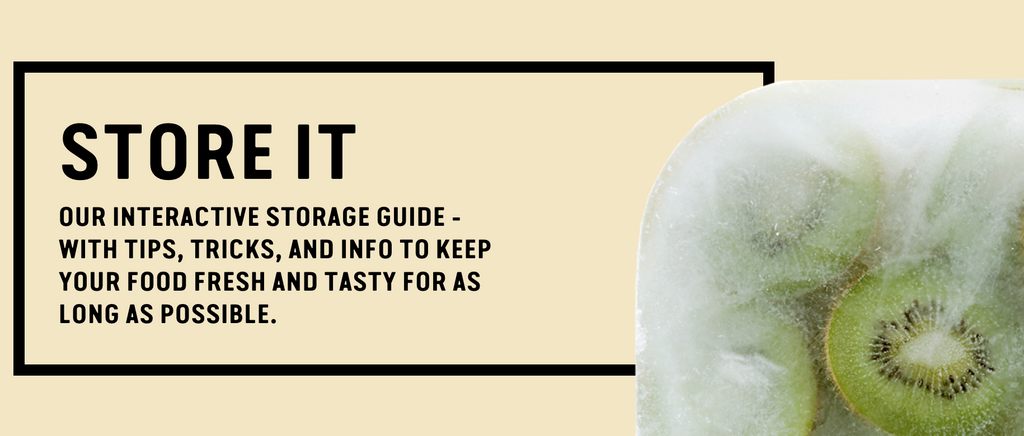
- Eat root-to-stem: Eat the entire vegetable or fruit and compost the rest. For instance, make broth with veggie scraps, roast seeds from squash, or brew a festively fruity tea with orange peels. We’ve put together a list of over 100 root-to-stem recipes for inspiration.
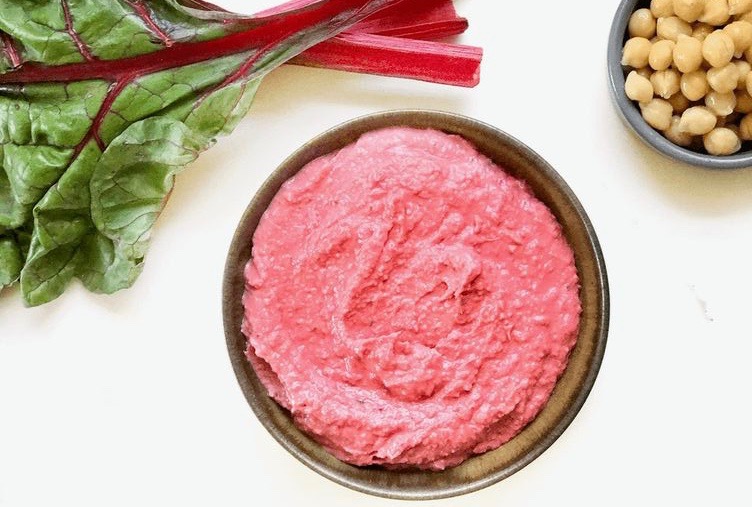
What else can you do about food waste?
Together, we can pressure governments to challenge the power and influence of the mega corporations that control the industrial food system. We need policies that limit waste in the food chain and ensure that everyone has access to healthy food, produced as locally as possible through ecological farming practices.
For now, you can use our tips to reduce your own food waste and make the most wasteful time of the year a little more wonderful for the planet.

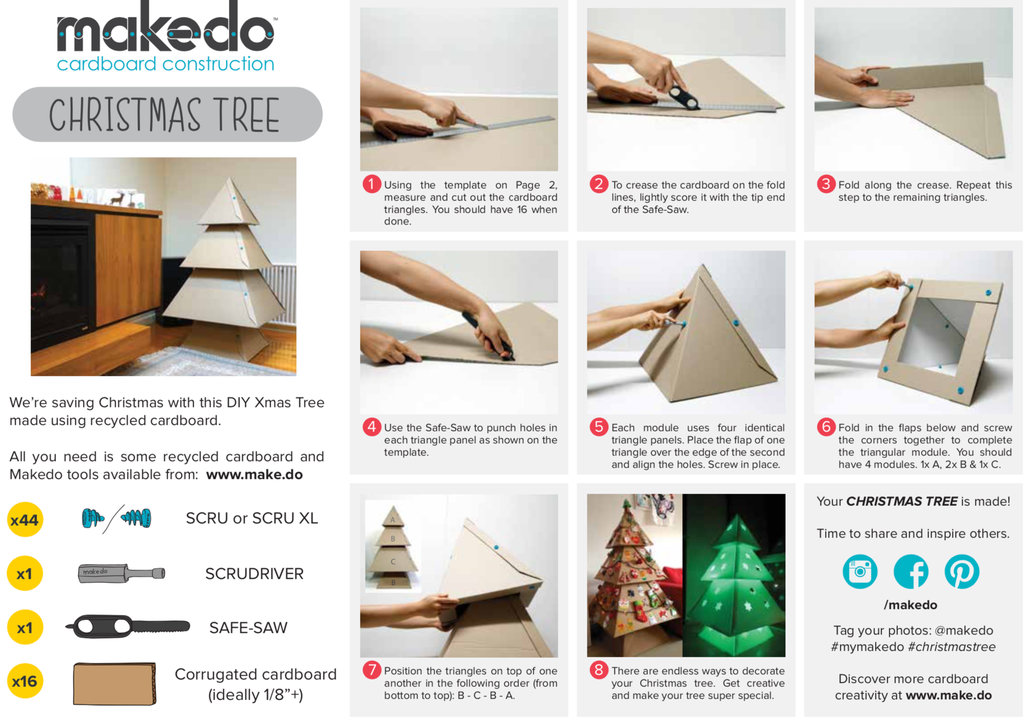
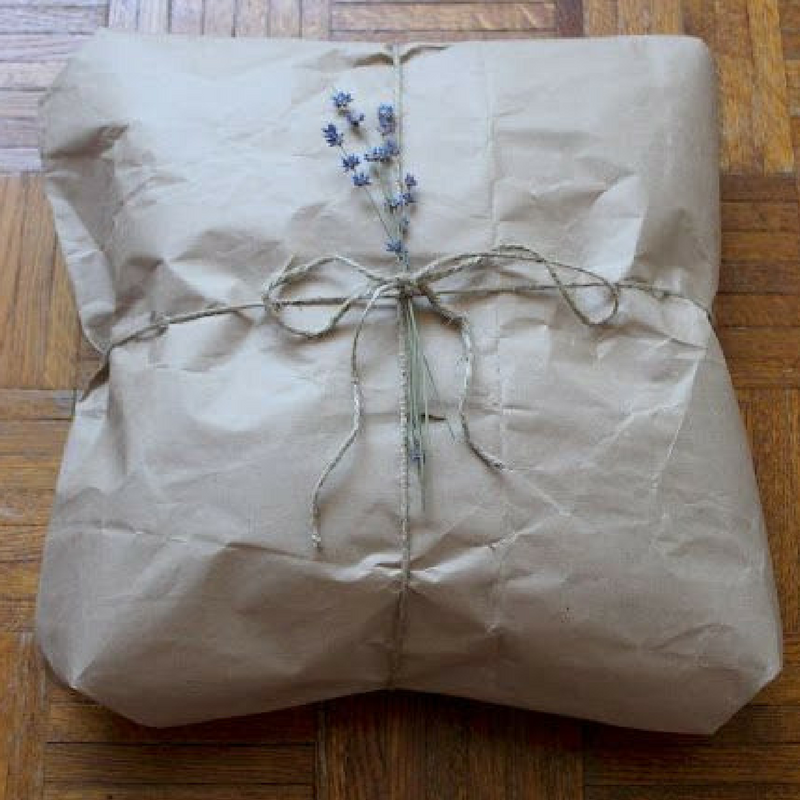
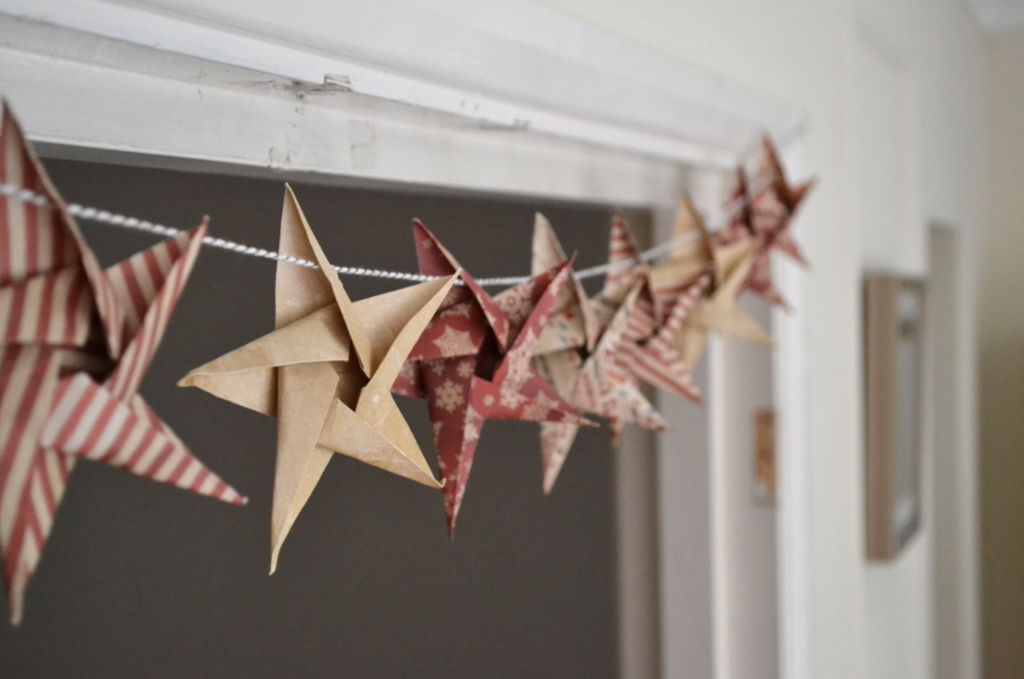
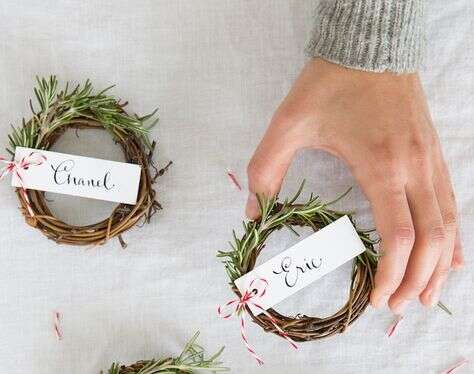
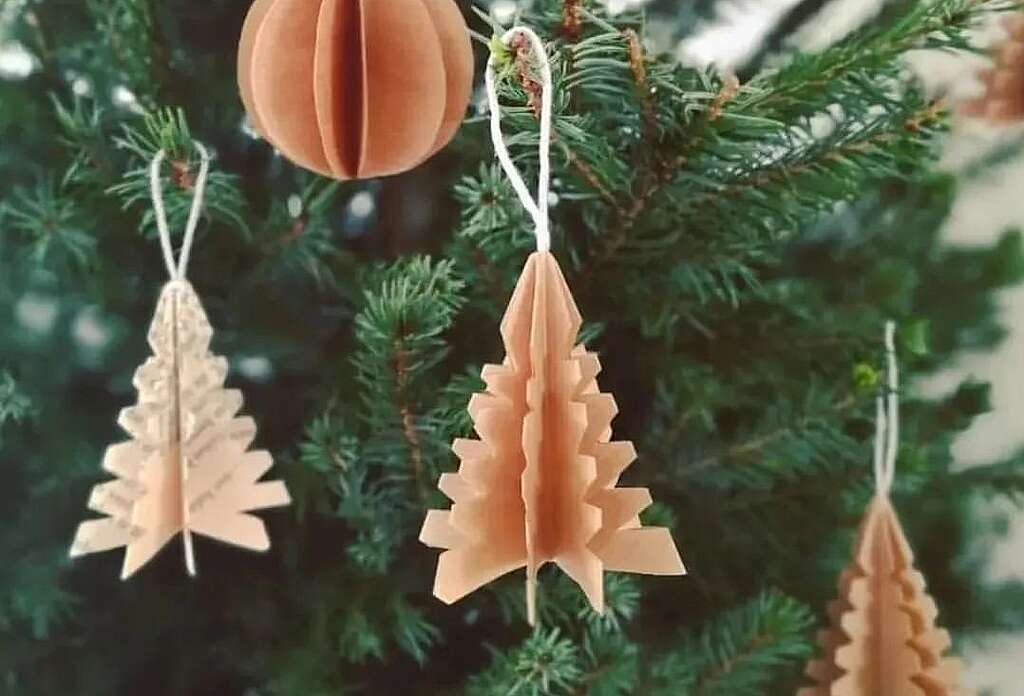
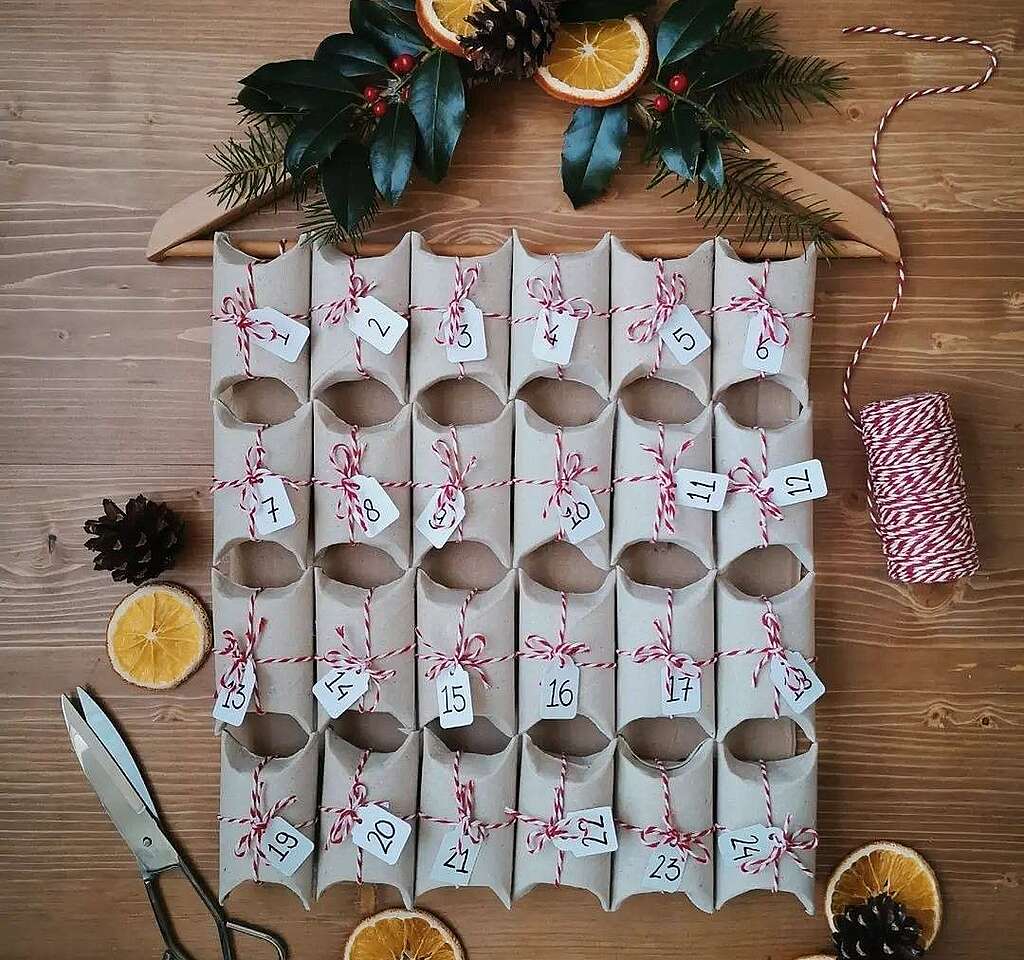


Discussion
Have had the same artificial tree for the past 39 years. It was extremely expensive at the time; however have not regretted investing wisely in a quality tree that is stored in its 'coffin' while not in use and making its appearance in December each year. Ornaments are also of that vintage with a few added yearly up to five years ago. It is beautiful and knowing its environmentally friendly works for me. Recycling giftbags have always been huge in my family too.
These are all fantastic ideas . Your attention to our environment is greatly appreciated. We borrow the earth from our children. Regards Karen Jantzi
Thank you for this guide! It is educational and very creative.
i agree and try to do many